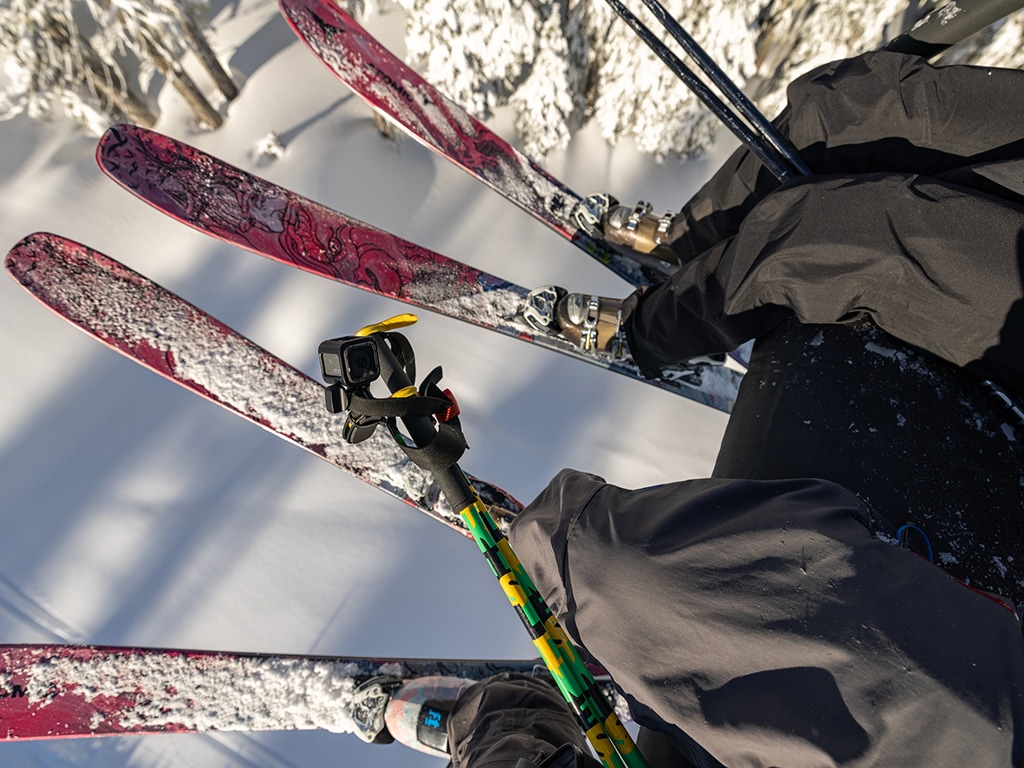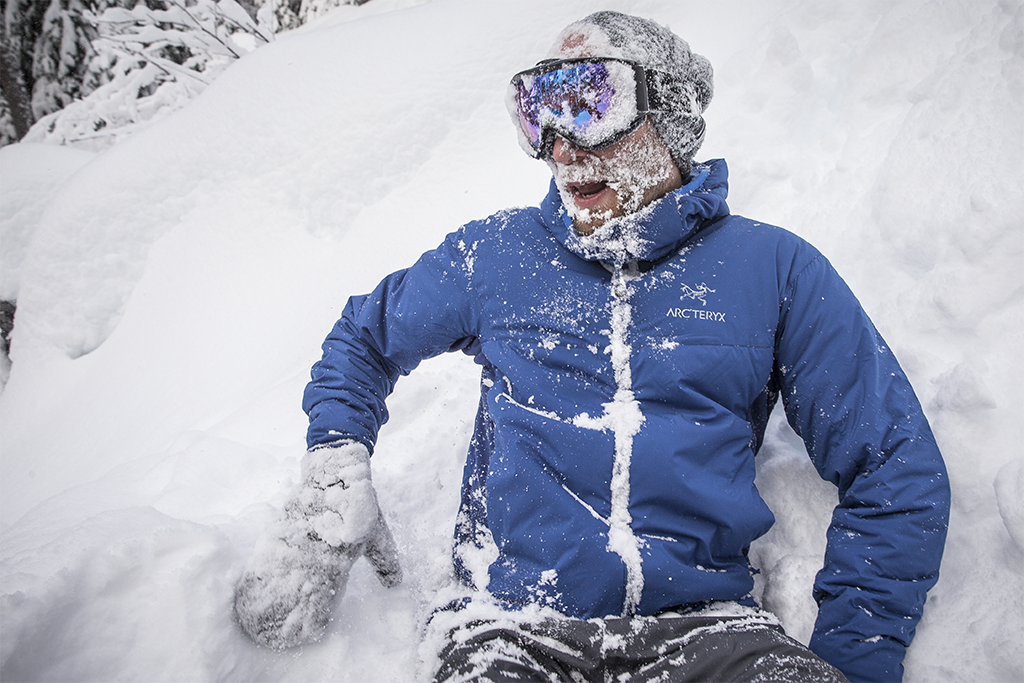The whooshing of your skis carving powdery pistes, the crisp mountain air filling your nostrils, the enchanting snow-laden landscapes throughout—for generations, this has been the stuff of winter-vacation fantasies. However the results of local weather change pose a big drawback for at the moment’s winter sports activities business. Dealing with shorter ski seasons, warming temperatures and reducing pure snowfall, ski resorts are more and more reliant on synthetic snowmaking operations to maintain the slopes open and maintain their backside strains.
As many as 95% of the world’s ski resorts now make use of snowmaking, in line with one latest research. And quite a few media retailers had been fixated on the subject throughout the 2022 Beijing Olympics, the primary Winter Video games to rely nearly completely on machine-made snow.
Whereas many winter sports activities fans really feel that machine-made snow is healthier than no snow in any respect, it’s essential to think about the environmental prices of snowmaking. Environmentalists warning that the machines used within the course of eat huge quantities of vitality and water and might injury native ecosystems. Satirically, many snow machines are additionally powered by fossil fuels—contributing to the very local weather drawback that has made them a necessity within the first place.
Right here, we examine the ecological prices of machine-made snow and contact on what the broader difficulty of local weather change means for the way forward for winter sports activities. Plus, we lay out actionable steps that particular person vacationers can take with a purpose to plan extra sustainable snowsports holidays, as annual winter snowfall within the U.S. has dropped by practically 50% for the reason that Seventies.
The Historical past of Snowmaking
People have been manufacturing snow for the reason that Nineteen Thirties. By the Seventies, snowmaking know-how turned extra widespread for sport use within the U.S., and by the 1980 Winter Olympics in Lake Placid, New York, synthetic snow featured for the primary time. At present, snowmaking machines are practically ubiquitous at ski resorts, serving to supply machine-made snow instead of—or as a complement to—pure snow.
Adrienne Saia Isaac, director of promoting and communications for the Nationwide Ski Areas Affiliation, a U.S.-based commerce affiliation for ski space house owners and operators, explains that one of many advantages of snowmaking is the consistency in snow cowl it affords. “You may management the kind of floor you set down, so it creates a really sturdy floor for the season.”
That consistency turns into a kind of insurance coverage coverage, assuring ski resorts (and their clients) that they’ll stay open all through the winter. Oftentimes, the snow machines are used to increase ski seasons (and revenues) into late autumn and early spring, together with the profitable fringe-season vacation intervals that kick off at Thanksgiving and wind down at Easter.
“Offering a constant product, and a begin and finish to a season, is admittedly essential—particularly for rural communities who depend on winter tourism and recreation as a part of their economic system and their employment alternatives,” Isaac explains.

The Local weather Disaster and Machine-Made Snow
The altering local weather, with rising temps which might be thawing and shortening winters, means there are fewer worldwide ski resorts that may reliably supply winter sports activities in pure circumstances. One research decided that the U.S. ski season was decreased by greater than a month (a median of 34 days) between 1982 and 2016; in Europe, the findings have been related. A separate Environmental Safety Company–funded report tasks that the majority U.S. ski areas ought to anticipate having no less than a 50% shorter season by 2050.
Drought circumstances, that are additionally exacerbated by local weather change, pose one more potential barrier to the feasibility of water useful resource–intensive snowmaking.
For the snow cowl–reliant ski business, that leaves some large questions on the best way to successfully adapt. Snowmaking is usually seen as a Band-Assist answer to the bigger local weather drawback, and it’s additionally not with out its personal limitations.
“Local weather change is affecting not solely pure snow, however it’s affecting the snowmaking operation as properly as a result of with out chilly air and the best temps we are able to’t do it,” says Isaac. “If you happen to’re solely getting 35-degree days, you’ll be able to’t freeze water; 40-degree days, it doesn’t occur.”
How Snow Is Machine-Made
The recipe for machine-made snow requires air, massive quantities of water and suitably chilly temperatures, in addition to the closely powered equipment and human snowmakers to fabricate it. Snowmaking makes an attempt to imitate the circumstances of pure snowfall, historically using snow weapons (aka snow cannons) that are positioned alongside the slopes. The machines then shoot small water droplets combined with compressed air (typically enhanced by chemical or organic components), which freeze within the chilly air earlier than the ensuing product falls to the bottom as snow.
Notably, whereas each pure and artificially made snow are primarily frozen water, manufactured snow is extra of a densely packed pellet than a softer “powdery” flake.
“Our snowmaking gear creates a snow particle just like a graupel [pellet-shaped frozen precipitation], the place pure snow is available in many alternative styles and sizes,” explains Brooke VanderKelen Alba, gross sales and advertising and marketing head for snowmaking firm SMI Snow Makers. It’s a form that, she says, “makes our snow extra resilient to the thaw/freeze cycles and permits for a extra constant snow high quality throughout the slope.”
Isaac emphasizes that the machine-produced snow itself isn’t “pretend,” such as you would possibly see within the motion pictures or in vacation shows, however moderately a combination of the pure sources of water and air. “What you see popping out of snowmaking could be machine-made. It’s not made by Mom Nature. But it surely’s nonetheless very actual.”
The Seen and Unseen Prices of Snowmaking
Snowmaking is resource-intensive, requiring plentiful water and vitality—components that environmentalists warn can spawn unfavourable ecological penalties.
In line with one report, it takes 200,000 gallons of water to cowl an acre with a foot of snow, whereas ski areas are able to changing 5,000 gallons of water into snow per minute. Snowmaking advocates state that 80% of the water utilized returns to the watershed. But environmentalists have raised questions on diverting water sources throughout instances of water shortage, in addition to the potential for altering pure water cycles and water desk ranges.
The big quantity of energy consumption required for snowmaking is one other concern, with many resorts nonetheless reliant on carbon-spewing fossil fuels for energy. Some estimates put snowmaking behind two-thirds of a ski resort’s vitality wants.
Different ecosystem issues have been raised round noise disturbances to native wildlife, and disruptions to vegetation and soil composition beneath the artificially made snowpack.
Past environmental issues, quite a few stories have indicated security issues for winter sports activities individuals given the more durable and quicker floor of synthetic snow, which can heighten the danger for accidents throughout falls.

The Way forward for Machine-Made Snow
“The chance is evident: man-made warming is threatening the long-term way forward for winter sports activities,” a latest research cautions, including that ski resorts’ heavy reliance on synthetic snow “might grow to be the norm over time as our planet warms, beginning with lower-altitude slopes and elevating strain and prices on greater resorts.”
Dr. Madeleine Orr, program director for Sustainable Sport Enterprise at Loughborough College and co-author of that research, explains that lower-elevation resorts are usually missing chilly sufficient temperatures to naturally maintain a prolonged ski season. “Thus far, snowmaking has been the know-how preserving it tenable, however that might not be sustainable by the second half of the century,” she says.
Certainly, if warming traits proceed, snowmaking itself could not be doable at many current ski locations.
Orr says, “If the times are simply too heat, even synthetic snowmaking is inadequate. You may energy up all of the snow weapons you need, but when it’s not chilly sufficient for the crystals to kind, or if the snow melts as soon as it touches the bottom, you’ve bought nothing to ski on.”
As a substitute, Orr believes skiers should journey farther to entry higher-elevation resorts, including journey time and expense to the wintry combine. “Normally, this would possibly imply fewer individuals are capable of ski towards the midcentury.”
Sustainable Strides in Snowmaking
Many resorts are already embracing more and more sustainable snowmaking options, together with extra environment friendly equipment and cleaner renewable energy sources like photo voltaic panels and wind generators.
“There are some nice improvements taking place on this house,” says Orr. “Powering the system by means of renewables, leveraging as a lot water seize and reuse as doable and designing techniques that final 30, 40 years or longer, are all options being carried out throughout the business proper now.”
Nonetheless, some environmentalists say that snowmaking is merely an adaptation technique, and its affect is negligible with regards to the large-scale menace of local weather change.
“The true difficulty is decreasing emissions sufficient to gradual warming, stabilize precipitation patterns and maintain a extra secure, constant snowpack all through winter,” explains Torrey Udall, chief of workers on the nonprofit Shield Our Winters. “We try this by means of systemic adjustments to the best way that we make vitality and transfer round in ways in which produce zero, or no less than considerably decrease greenhouse gasoline emissions.”
The way to Select Extra Sustainable Snowsports Holidays
Specialists say particular person vacationers can take steps to assist guarantee a cleaner, greener winter sports activities holidays—like touring at instances when mountain circumstances usually tend to be proper for pure snowfall, or to locations that don’t require snow machines.
“Go when and the place you don’t have to depend on synthetic snow,” says Tim Williamson, buyer director at U.Okay.-based journey firm Accountable Journey. “So go excessive altitude or go in midwinter. Keep away from low-lying resorts and the shoulder season.”
Selecting ski resorts that embrace sustainability efforts of their operations is one other good selection. (In case your favourite resort isn’t listed as a Sustainable Slopes endorser, take into account recommending a sign-up to administration.) Vacationers may make efforts to scale back their very own carbon footprint whereas attending to their vacation spot by forgoing planes for trains or electrical automobiles, as an illustration, or carpooling or using a bus or shuttle to the slopes.
Lastly, consultants say to make use of your voice: Contact resorts, vacationer boards and, most significantly, legislators to precise your issues—and, in the end, make your voice heard by means of your selections.
“You don’t must be a scientist to be a local weather advocate,” says Isaac on the Nationwide Ski Areas Affiliation, who believes the options should occur on the authorities stage. “If you happen to love snowboarding, defend it and defend the water sources and work along with your elected officers to implement broadscale regulatory and legislative change.”
“We want each answer and everybody onboard with a purpose to ensure that we’ve snowsports sooner or later.”


